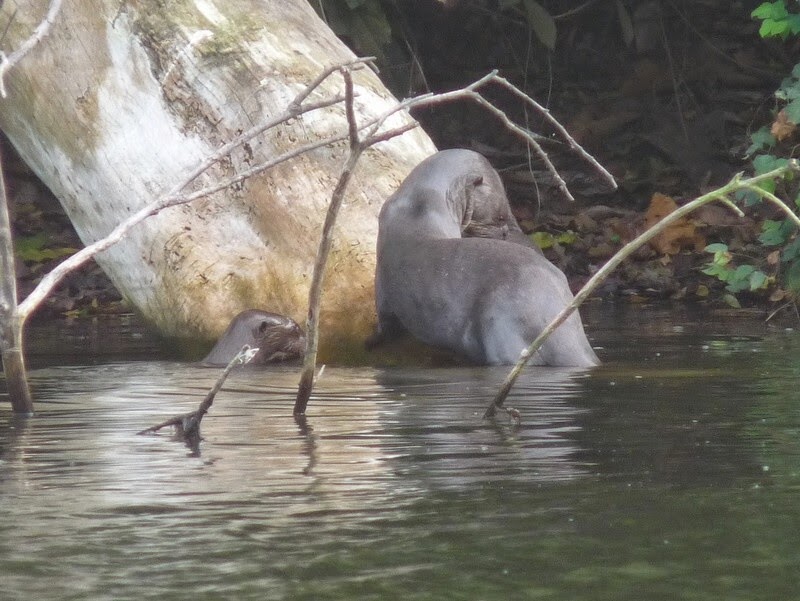On this day in 1821 the Argentine General José de San Martín, having led the Army of the Andes (comprising Chileans and Argentinians) to victory in Lima over the last significant Spanish stronghold in South America, declared Peru to be independent. True independence actually took a little longer, but this is the day of national celebration every year. I'm not going to attempt an overview posting on Peru here - apart from anything else there is so much of the country that I've not yet seen.
Instead I'd like to draw your attention to this wonderful country today by introducing you to just one magnificent and remarkable lake, deep in the Amazon basin. Cocha Salvador is a very large oxbow lake, a former great bend of the Manu River cut off by floods and now forming a deep still backwater with rainforest down to the shores.
 |
| Primary rainforest on the shores of Cocha Salvador. |
The Manu Reserved Zone is a vast wilderness within the Manu Biosphere Reserve, inhabited by indigenous people and only otherwise accessible to researchers and visitors accompanied by authorised and environmentally trained guides. Cocha Salvador is in this reserve, not in Manu National Park as often claimed in web sites of companies who go there - the park itself is closed to all visitors except authorised researchers. It is near to Machiguenga Lodge, owned and operated by the Machiguenga people. I have to say that last time I was there the project was not thriving, but I'd love to be told that things have improved since then.
The lake is accessible by boat along the river, then a short walk through the forest before embarking on simple heavy rafts, poled along; only one group at a time may be on the water, by booking through the Parks Service.
We arrived at dawn for a highly memorable excursion.
 |
| Sunrise over Cocha Salvador. |
The key aim of any visit to Cocha Salvador is to encounter one of the most impressive, and rarest, big mammals in South America. The big oxbow lakes - and they are few - are key habitats for Giant Otters Pteronura brasiliensis, an endangered species across their northern Amazon Basin range. Heavy hunting for skins has reduced its numbers to no more than 5,000; it is listed as Endangered. Even in remote Manu it is estimated that only a dozen families survive. One of these is in Cocha Salvador.
They are also highly vocal, and their squeals, whistles and whining calls help to locate them.
They are far from the only large animals in the water though, and there is an ongoing struggle with the Black Caimans Melanosuchus niger, the largest member of the alligator family, which can grow to five metres long. Both otters and caiman prey on each others youngsters; the otters will also team up to attack larger caiman.
 |
| Big Black Caiman, Cocha Salvador. |
Waterbirds are also abundant, especially in the forest fringes.
 |
| Amazon Kingfishers Chloroceryle amazona hunt from perches. These are large kingfishers, up to 30cm long. This is a male. |
Dead trees in the water support big colonies of hanging nests, belonging to Yellow-rumped Caciques Cacicus cela, common members of the icterid family - the 'North American blackbirds' whose ancestors crossed south on the Isthmus of Panama a few million years ago.
 |
| Yellow-rumped Cacique colony (above) and an owner-builder (below). |
And on the way back to the basic wharf, don't forget to keep an eye into the tree-tops - monkeys are a highlight of the Amazon.
 |
| Colombian Red Howler Monkey male Alouatta seniculus; their pulsing roar, like a great wind, is one of the sounds of the Amazon for me. |
So, Happy National Day to my Peruvian friends - and thank you for sharing Cocha Salvador with me!
BACK ON FRIDAY


















































